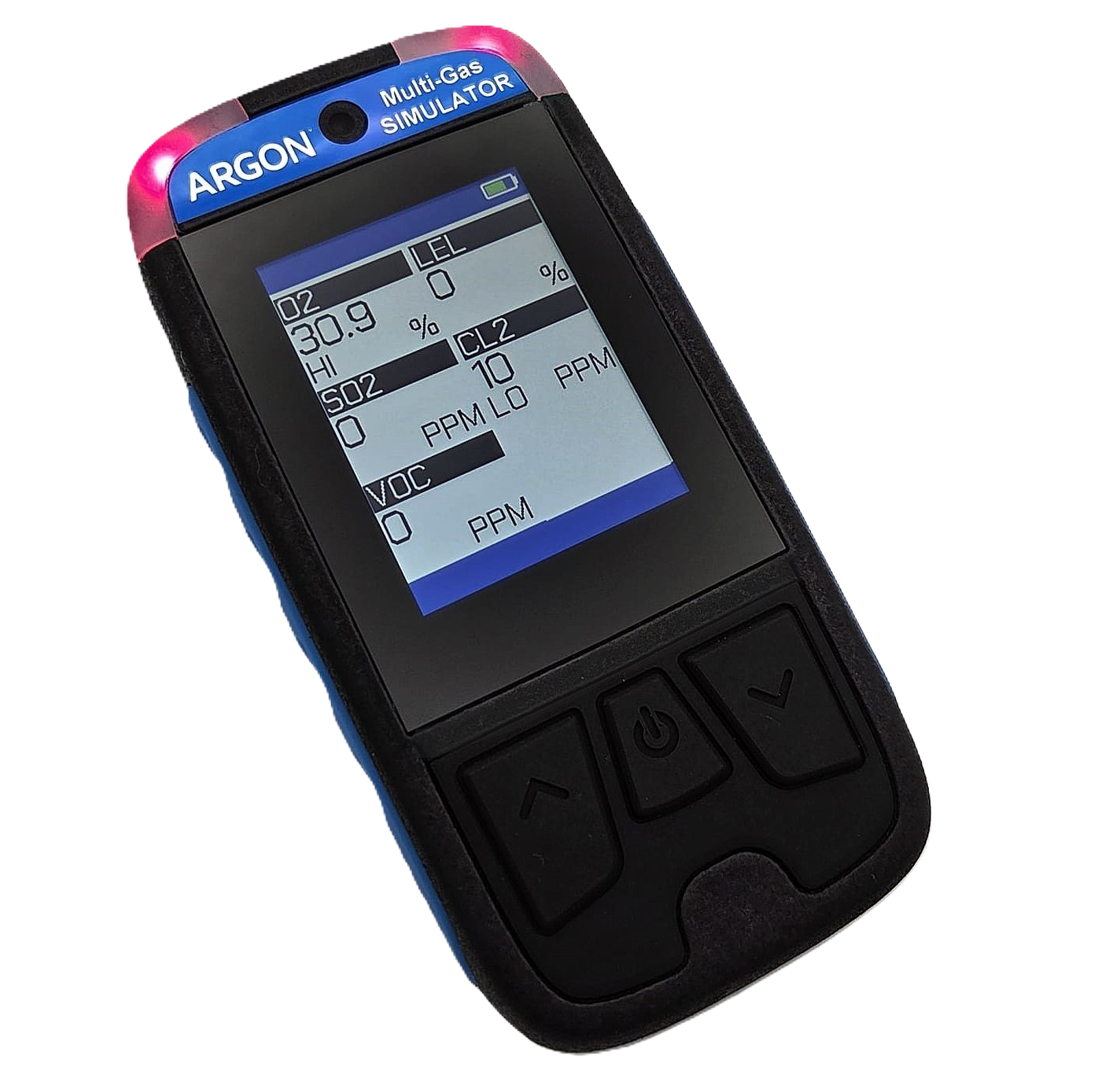MultiGAS SIM
Argon’s Generic MultiGAS-SIM is a highly configurable simulator that provides you with effective MultiGAS meter training
MultiGAS Training Simulator
MultiGAS-SIM supports from one to a total of six different simulation sensor types, including O2 CO, H2S and LEL. Instructors can configure the MultiGAS-SIM to incorporate specific simulation sensors as required to represent fielded single or multiple sensor MultiGAS detectors. You can even configure the visual layout of the sensors on the display screen to accurately replicate the sensor layout configuration of your operational detectors.
Key Features
-
Realistic Training: Mimics the operation of real gas detectors, providing trainees with practical, hands-on experience.
-
Customizable Scenarios: Enables tailored training for a wide range of hazardous environments and operational conditions.
-
Enhanced Learning: Real-time feedback through instructor monitoring ensures trainees learn from their mistakes in a controlled, safe environment.
-
Advanced Simulation Features: Features realistic O2 readings and LRVS simulation gas emitters detected up to 25 meters (80 feet).

Simulate Multiple Gases
MultiGAS-SIM responds to our standard, easy to use simulation Long Range Vapour Source (LRVS) hazards. They can be deployed in the open or within confined spaces and programmable to represent a wide range of hazardous substances and scenarios, including the depletion of O2. When programmed at a reduced setting, LRVS emits a signal that remains close to the floor or close to the ceiling depending upon placement.
The LRVS gas emitters emit a signal detectable up to 25 meters (80 feet) away in open space, allowing the simulated readings to rise as the student nears the hazardous zone and decrease automatically as they move away.
When the LRVS gas emitters are placed in a room and the door is closed, the ultrasound signal can be easily contained. The simulation gas signal will escape through the gaps between the door and the floor unless the door forms a seal, in which case no detection occurs.
Once the door is opened slightly, the reading increases and continues to increase noticeably when the door is opened wider.
Sensors Include:
- O2
- CO
- SO2
- SO2
- H2S
- CL2
- CO2
- NO2
- HCN
- CLO2
- NO
- VOC
- NH3
Get in touch if you require a sensor not listed as we are able to customise the MultiGAS-SIM to suit your needs.
Realistically Simulated O2 Depletion
Many responders consider the O2 sensor to be the most valuable component of a multigas detector because numerous substances can reduce oxygen levels. Even if a specific sensor for the chemical release is not available, an O2 sensor will notify the user of this depletion. MultiGAS-SIM acknowledges the importance of this training element and thus simulates O2 depletion when an unidentified substance is present.
Elevate Your Training
An optional Gamma Radiation Survey sensor offers a highly realistic simulation of radiological hazard responses. It is fully compatible with Argon’s GS series simulation Gamma Sources and works seamlessly with our extensive range of simulation Gamma Survey meters, Personal Dosimeters, and Spectrometers.
MultiGAS-SIM is also compatible with PlumeSIM, Argon’s world leading wide-area CBRN / HazMat training system.
The MultiGAS-SIM is very easy to use, does not require any regular calibration or preventative maintenance and has no consumables, except for readily available AA batteries, resulting in negligible ongoing ”whole life” cost of ownership.